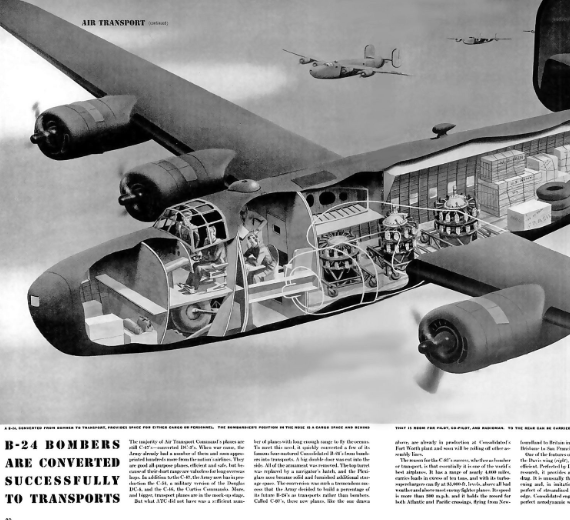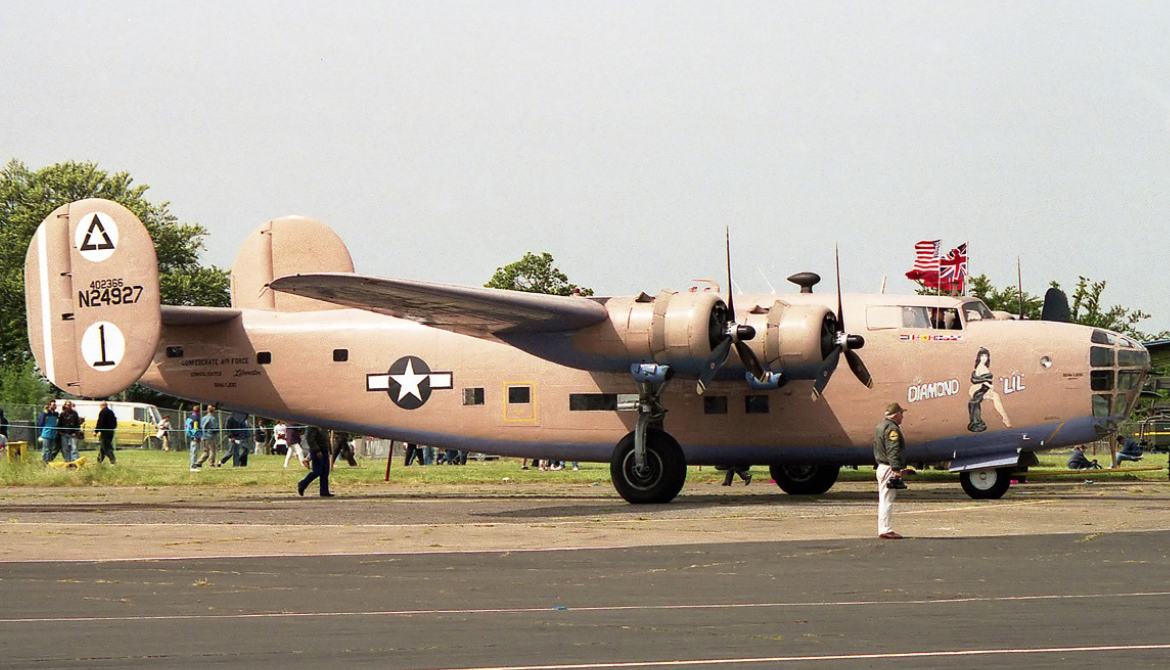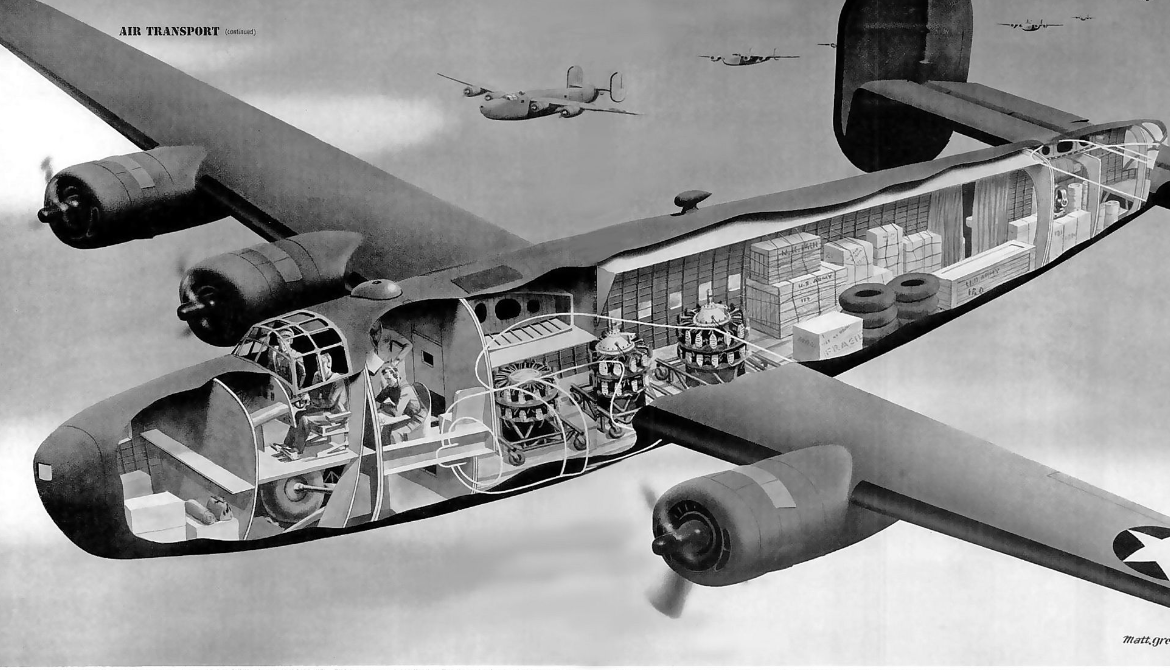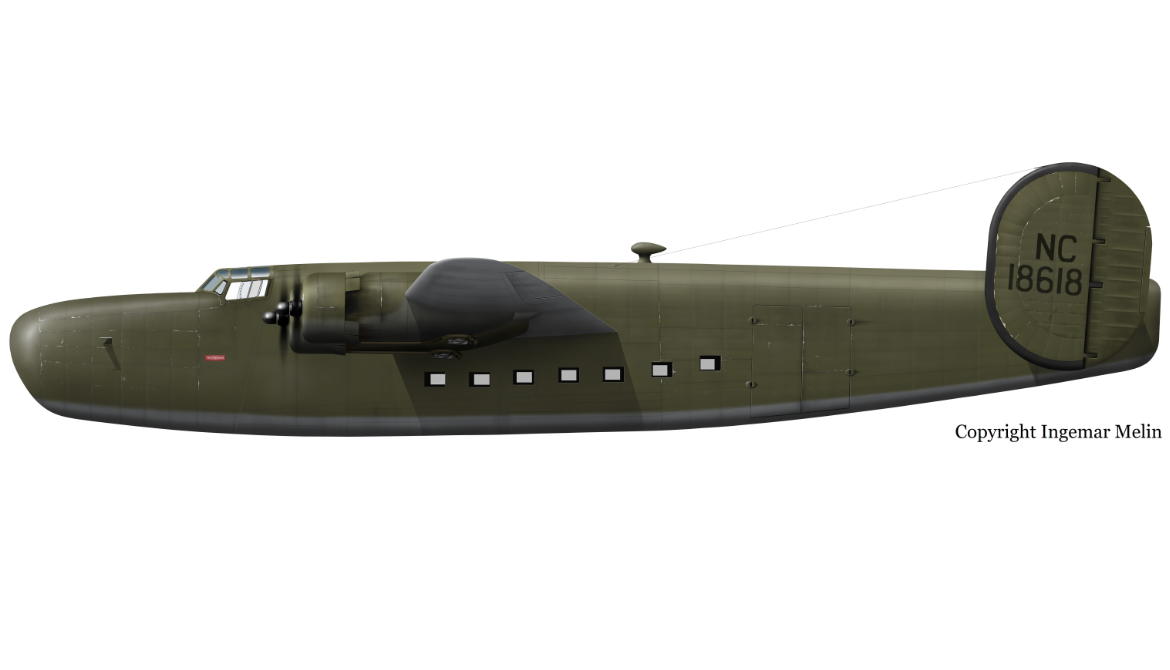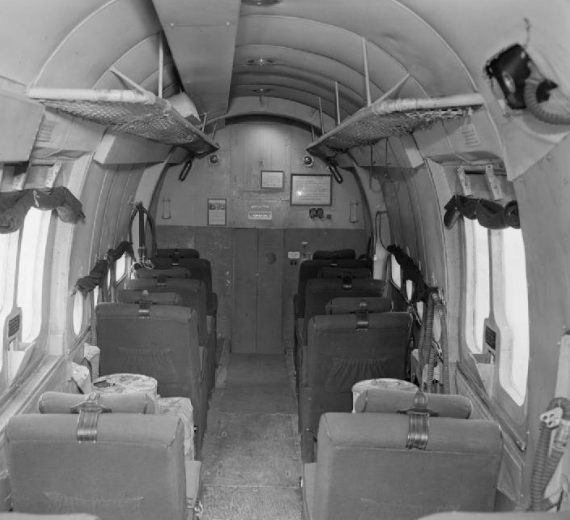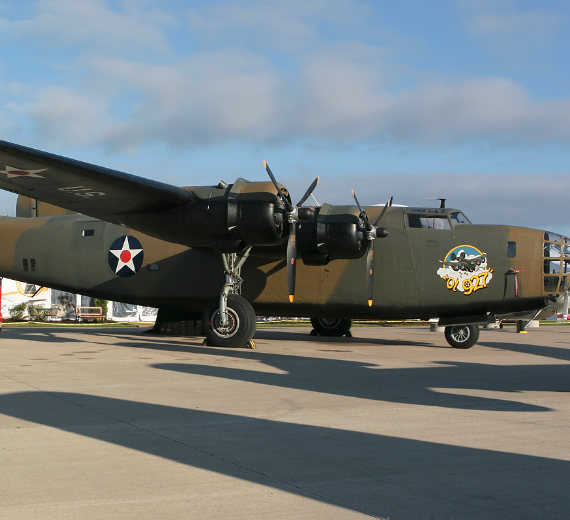Consolidated / Convair
Consolidated C-87 Liberator Express
 |
|
| General information | |
|---|---|
| Type | Military transport aircraft |
| Manufacturer | Consolidated Aircraft |
| Status | Retired |
| Primary users | United States Army Air ForcesRoyal Air Force United States Navy |
| Number built | 287 |
| History | |
| Introduction date | 1942 |
| Developed from | Consolidated B-24 Liberator |
History Consolidated / Convair
Consolidated C-87 Liberator Express

The Consolidated C-87 Liberator Express was a transport derivative of the B-24 Liberator heavy bomber built during World War II for the United States Army Air Forces. A total of 287 C-87s were officially delivered from Consolidated Aircraft plant in Fort Worth, Texas. The plant also developed and delivered a USAAF flight engineer trainer designated as the AT-22. The AAF C-87A was an executive transport version of the C-87. The United States Navy VIP transport designated as the RY. The last development was a Navy contracted, single tail version with an extended fuselage. Built in San Diego, its USN designation was RY-3 and the AAF had order the design as the C-87C.
The C-87 was hastily designed in early 1942 to fulfill the need for a heavy cargo and personnel transport with longer range and better high-altitude performance than the C-47 Skytrain, the most widely available United States Army Air Forces transport aircraft at the time. Production began in 1942.
The first C-87 prototype was 41–11608. The design included various modifications, including the elimination of gun turrets and other armament along with the installation of a strengthened cargo floor, including a floor running through the bomb bay. The glazed nose of the bombardier compartment of the B-24 was replaced by a hinged metal cap to allow for loading the nose compartment, which in the bomber version can only be reached through a crawlspace under the cockpit floor. A cargo door was added to the port side of the fuselage, just forward of the tail, and a row of windows was fitted along the sides of the fuselage.
Operational history

Most C-87s were operated by the U.S. Air Transport Command and flown by formerly civilian crews from U.S. civil transport carriers. The planes were initially used on transoceanic routes too long to be flown by the C-47. After the Japanese invasion of Burma in 1942, the C-87 was used for flying war material from India to American and Chinese forces over "The Hump", the treacherous air route that crossed the Himalayas. When the route was established, the C-87 was the only readily available American transport with high-altitude performance good enough to fly this route while carrying a large cargo load.
The C-87 was plagued by numerous problems and suffered from a poor reputation among its crews. Veteran airline pilot and author Ernest K. Gann, in his 1961 memoir Fate is the Hunter, wrote: "They were an evil bastard contraption, nothing like the relatively efficient B-24 except in appearance." Complaints centered around electrical and hydraulic system failures in extreme cold at high altitudes, a disconcertingly frequent loss of all cockpit illumination during takeoffs, and a flight deck heating system that either produced stifling heat or did not function at all
0
KmCeiling
0
KmCombat RANGE
0
Km/hAircraft Speed
0
Max Crew
Photo Gallery
Consolidated / Convair / Vultee
Consolidated C-87 Liberator Express


Consolidated Convair Vultee
Consolidated C-87 Liberator Express
General characteristics
- Crew: four (pilot, co-pilot, navigator, radio operator)
- Capacity: ~25 passengers or 6,000 lb (2,700 kg) of cargo for transatlantic flights and 10,000 lb (4,500 kg) max for shorter flights
- Length: 66 ft 4 in (20.22 m)
- Wingspan: 110 ft 0 in (33.53 m)
- Height: 17 ft 11 in (5.46 m)
- Wing area: 1,048 sq ft (97.4 m2)
Powerplant
- Empty weight: (13,900 kg)
- Gross weight: (25,401 kg)
- Fuel capacity: 2,910 US gal (11,000 L; 2,420 imp gal)
- Powerplant: 4 × Pratt & Whitney R-1830-43 14-cyl. air-cooled radial piston engines with General Electric turbo-superchargers, 1,200 hp (890 kW) each at 2700 rpm for take-off
Specifications
- Maximum speed: 300 mph (480 km/h, 260 kn) at (7,600 m)
- Range: 1,400 mi (2,300 km, 1,200 nmi) at 60% power, 215 mph (187 kn; 346 km/h) at (3,000 m)
- Ferry range: 3,300 mi (5,300 km, 2,900 nmi) at 215 mph (187 kn; 346 km/h) at 10,000 ft (3,000 m)
- Service ceiling: 28,000 ft (8,500 m) at (25,000 kg) take-off weight
- Time to altitude: 20,000 ft (6,100 m) in 60 minutes
Links to Youtube & Others
Despite its shortcomings and unpopularity among its crews, the C-87 was valued for the reliability of its Pratt & Whitney engines, superior speed that enabled it to mitigate significantly the effect of head and cross winds.
Consolidated C-87 Liberator Express
The C-87 did not climb well when heavily loaded, a dangerous characteristic when flying out of the unimproved, rain-soaked airfields
Youtube Link
The aircraft could also become unstable in flight if its center of gravity shifted due to improper cargo loading.
